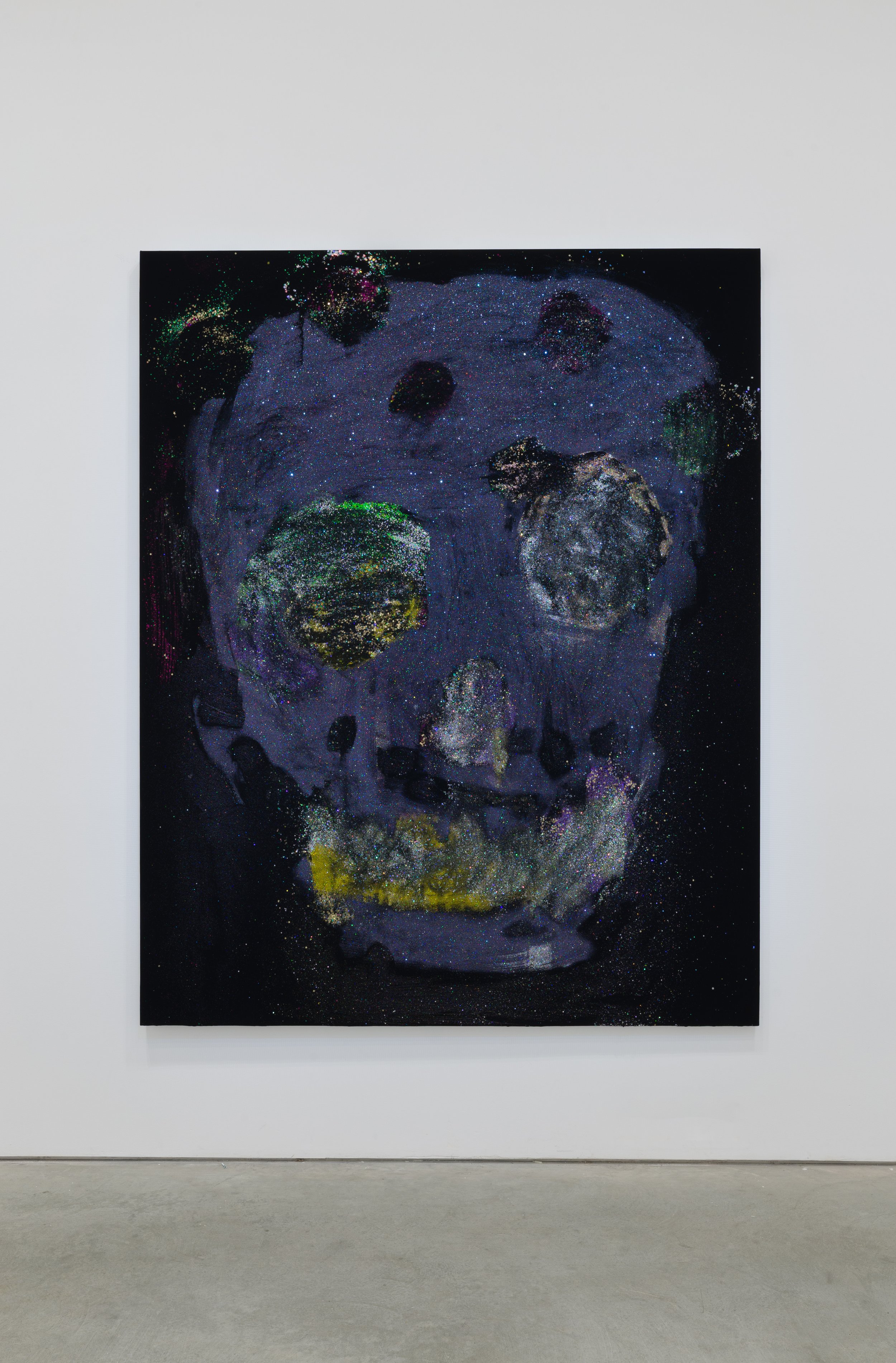ASTRID DICK: Kamikaze ponzi
M. David & Co. @ Art Cake
October 18 - December 1, 2024
Opening Reception: October 18, 6 - 9 pm
214 40th Street, Brooklyn, NY 11232
Hours: Thursday - Sunday. 12 - 6pm or by appointment
Review in CULTURED Magazine by John Vincler / Download PDF
James Kalm Rough Cut
Two Coats of Paint: NYC Selected Gallery Guide, November 2024
Press:
Press Release
Please join us Saturday November 23 at 3pm for this special event during Astrid Dick's exhibition. Four poets, including the co-editors of the new collection, Other Influences: An Untold History of Feminist Avant-Garde Poetry (MIT Press, 2024), will share their poetry along with Astrid Dick's work.
"Other Influences: The Poets"
Brenda Coultas, Marcella Durand, Jennifer Firestone, Tracie Morris
Saturday, November 23, 3pm
Brenda Coultas is the author of several books of poetry, including most recently, The Writing of an Hour, published by Wesleyan University Press in 2022. Marcella Durand is the co-editor, with Jennifer Firestone, of Other Influences. Her new collection of poetry, A Winter Triangle, is forthcoming from Fordham University Press in September 2025 as the 2024 Poetic Justice Institute Prize Winner. Jennifer Firestone is the co-editor, with Marcella Durand, of Other Influences and author of several books of poetry, including Story, Ten and Gates & Fields, and co-editor of Letters to Poets: Conversations about Poetics, Politics and Community. Tracie Morris is a professor of poetry at the Iowa Writers' Workshop. Her most recent book is human/nature poems from Litmus Press, 2023.
Copies of this new collection as well as many individual books by each poet and zines by Astrid Dick will be available for sale. Wine and refreshments will be served after the event, come raise a glass with us!
Kamikaze Ponzi: Abstraction in the age of anxiety
Astrid Dick engages with contemporary painting through her bold and complex mix of genres and materials, her mastery of oil paint, and her exuberant use of color, simultaneously embracing and subverting her love of modernism and the history of painting.
Her plurality is hard to define, a “disperse tapestry on the uncertain hyperplane of the personal,” according to her own words (from her zine, A True History of Stripes, 2022). One can say for sure that her work is not a manifestation of a detached eclecticism nor derivative of a codified style of mixing genres. In her work one senses, on the one hand, her devotional embracing of art history and modernism, the sensuality of that old classical tradition of oil paint, the physicality of gesture and the large scale, and the attraction of materials such as glitter and sequins. On the other hand, the work suggests a certain discomfort, restlessness, humor, and deep questioning of all of the above. “This and that, neither this nor that” she says with a smile when asked about what the work is about. Her effortless combination of genres, both within and outside the picture plane, is more of a constantly moving form that seems a suitable response to our fragmentary, saturated, anxiety-filled times, perhaps even a form of rebellion, a place in between - her devotional practice of abstraction in the age of anxiety.
If we look at the evolution of Dick’s work, and also at her trajectory as an MIT-trained economist who left academia in her mid-thirties for art, we discover that this tension is a consistent thread throughout. In a review of exhibitions in Paris in 2012*, French art historian Jean-Luc Chalumeau writes: “I was struck to learn, on March 26 [Le Monde**], that one of the best economists of her generation, Astrid Dick (Argentine, 39 years old), winner of the 2012 Europlace prize for best topical article in research in finance, has abandoned economics to devote herself exclusively to her activity as an artist. We can guess that I rushed to the internet to discover the works of this out-of-the-ordinary painter. I discovered an obvious expressionist talent…historically…not a trend, but a state of mind,” further noting that painters like Dick “react energetically against everything that is acceptance of the world as it is.” Citing Dick’s words from the newspaper article as well as her research on the link between personal bankruptcies, credit and deregulation, whose relevance was brought to light by the subsequent subprime crisis and its effects worldwide, Chalumeau concludes “we understand her dismay and disgust: ‘I can’t live without art, which helps us connect to other humans, when life is so difficult, and to find hope.’”
This exhibition, which focuses on the possibilities of the rectangle, presents paintings, a video, and a zine. At the center stage are her paintings, which range from large (100 inches tall) to small scale (10 inches tall), mostly in oil paint but also in sequins and glitter, on canvas, wood, mirror, and foam, as well as in situ paintings on the floor of the gallery. Parallel to her painting practice, Dick has for the last decade worked in video; her film “Everybody needs a black square” (2023, super 8, 3’) is included in the exhibition, along with the launching of her new zine of the same title (2024, 44 pages).
In the painting Piétiner (Complementaries for P.M.) (2024), Dick references the use of a soft geometry (as an homage to Mondrian and Heilmann) and unexpectedly combines it with gestural abstraction. Rave (2024), the largest work in the show and a subtle, almost all-over glitter painting reminiscent of the night sky, fluctuates between deep black, shine, and a hard geometry, as the viewer moves in space and a clearly defined grid reveals itself from the side view. Dick has been working with the pattern of stripes since 2016; a nod to this practice is One Take Redux Tiger Hunt 2021 (2024), where fluid and sensuous brushwork is held in a monumental composition. Stripes for Madame du Barry (2024), sculpted on discarded foam, is the only shaped piece in the show - a material Dick found in the trash in 2021 and that led to an homage to Diego Maradona, and to her greater involvement with the painting support - a piece she considers at the “fringes” of this exhibition, a hint to a spatial composition with openings and torsions. Her new zine on the theme of the black square is an insane cross between James Joyce’s Ulysses and John Holmstrom’s Punk Magazine. Her poetic and lively manifesto Kamikaze Ponzi, the artist’s “statement” for the exhibition, gives significant glimpses into her reflections on her painting practice. All of these are a reminder that Dick uses no half measures in how she makes each one of her pieces and in the way they are brought together in this exhibition.
In this high-wire act between improvisation, intentionality and intuition, she combines color, gesture and touch, using an underlying scaffolding resulting in implied poetic narratives. By virtue of her boldness in mixing styles, promiscuity of materials and her ownership of what was previously the male canon, her paintings are neither male nor female but individual in the voice of a libertine. In the catalogue for her recent one-person exhibition Ne Pleure Pas Paillettes in Paris, painter and poet Hugo Pernet writes:
“It takes a certain courage to refuse the “signature” effects so common in abstract painting. This courage implies the acceptance of not being loved, understood, recognized. To advance with the spirit of adventure, towards “a not-knowing knowing,” as John of the Cross wrote in his mystical poems. To find the determination and strength to feel legitimate, to reread a history written by men. Astrid Dick’s painting is both a fight and a game. This is why we always find something a little painterly about it: the painting is a concrete object that tells its own materialization, and in this story-in-acts are grafted parasitic emotions and thoughts, flakes of subjectivity fallen into this volcano in formation.”
That is her gift, that she can take all of these things processing them so quickly, making them her own, a freedom of expression, a tangible space for all of us to enter into.
-Michael David
Artist, curator, educator
October 2024
* “Dick, Kleinberg, Renard : présence de l’expressionnisme,” RAL,M Revue d'art et de littérature, musique, Jean-Luc Chalumeau, April 16, 2012.
KAMIKAZE PONZI
Move paint around.
Deal with gravity.
Don’t impose your rules ex ante.
Trust the closed system of painting.
There are enough constraints in being you.
Set your framework as the sorbet between dishes to cleanse the palate.
Trou Normand.
Remain alien.
You are inescapably yourself.
Conspicuously dee-Light.
Beware of symmetry.
Your intuition is not empty rhetoric because you beat the hell out of it.
In space, One Composition, Various Tableaux.
It can totally fail.
L’éternel retour.
Ou détour.
Kamikaze.
Ponzi.
To join Little Richard
- Astrid Dick
August 2024
Astrid Dick, Piétiner (Complementaries for P.M.), 2024. Oil on canvas, 84 x 72 inches (213 x 183 cm). Photo: Pete Mauney
Born and raised in Buenos Aires, Astrid Dick has been working and living in Paris for the last two decades. Dick has been a recipient of the Milton and Sally Michel Avery Visual Arts Fellowship at Yaddo and the Atlantic Center for the Arts, among others, and shown her work through solo and group shows in Europe, the US and Argentina, such as the Grand Palais in Paris and the Manoir de la Ville de Martigny, Switzerland. Most recently, she has shown at Moments Artistiques in Paris, at MDavid & Co. Gallery and at Below Grand Gallery in New York, at Johnson Lowe Gallery in Atlanta, and her work was reviewed by John Yau in Hyperallergic and by David Rhodes in The Brooklyn Rail, among others. She holds a PhD in Economics from MIT.
Photos by Andrew Schwartz











































